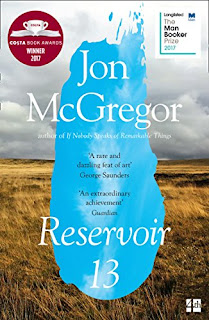otrops reviewed Reservoir 13 by Jon McGregor
Review of 'Reservoir 13' on 'Storygraph'
5 stars
Reservoir 13 tells the story of a girl who goes missing in a village on New Year’s Eve. It chronicles the effect of her disappearance on the people of be village and they go on living despite that impact.
This is a remarkable book and there is much I want to say about it, but I’ll limit it to three related things that struck me as I read the book: the structure, the layers and the characters.
The structure of the book only really became apparent to me as I finished the book. The book is written as if it were a piece of music, though not a typical Western piece of music. The book is cyclical, rather than linear. Each cycle is based on years, months and seasons. With each cycle, reoccurring themes and variations come come to the fore and fade into the background. It reminded me of Gamelan or an Indian Raga. In many ways this could have been a book written by an Oulipo author, though the structure here felt much more natural than many Oulipo books.
The cyclical nature of the book allows McGregor to build layer upon layer. The stories here don’t feel as if they are being told. Instead, they feel like they slowly emerge. As I read, a clear picture of the village, its yearly traditions and its surroundings became clearer and clearer with each passing year. Not entirely unlike moving someplace new and slowly getting to know it.
More than anything it is the characters that come through in this book. As with everything else in this book, I felt I was getting to know them bit by bit. Each character become more familiar even as the memory of the missing girl ever so slowly began to fade. McGregor’s calm descriptive prose revealed the characters through their comings and goings, their fallings in love and their fallings out, their rises and falls. As with all great characters, it is their relationships — to each other, to the village and to their surroundings — that defined them.
In the end, this was a book that I didn’t want to end, such was my investment in the village and the people that lived there. Despite the nonlinear structure, the clear straightforward writing made reading it a pleasure. This is a book I could return to and always find something new. I hope to read it again in a year or two.

